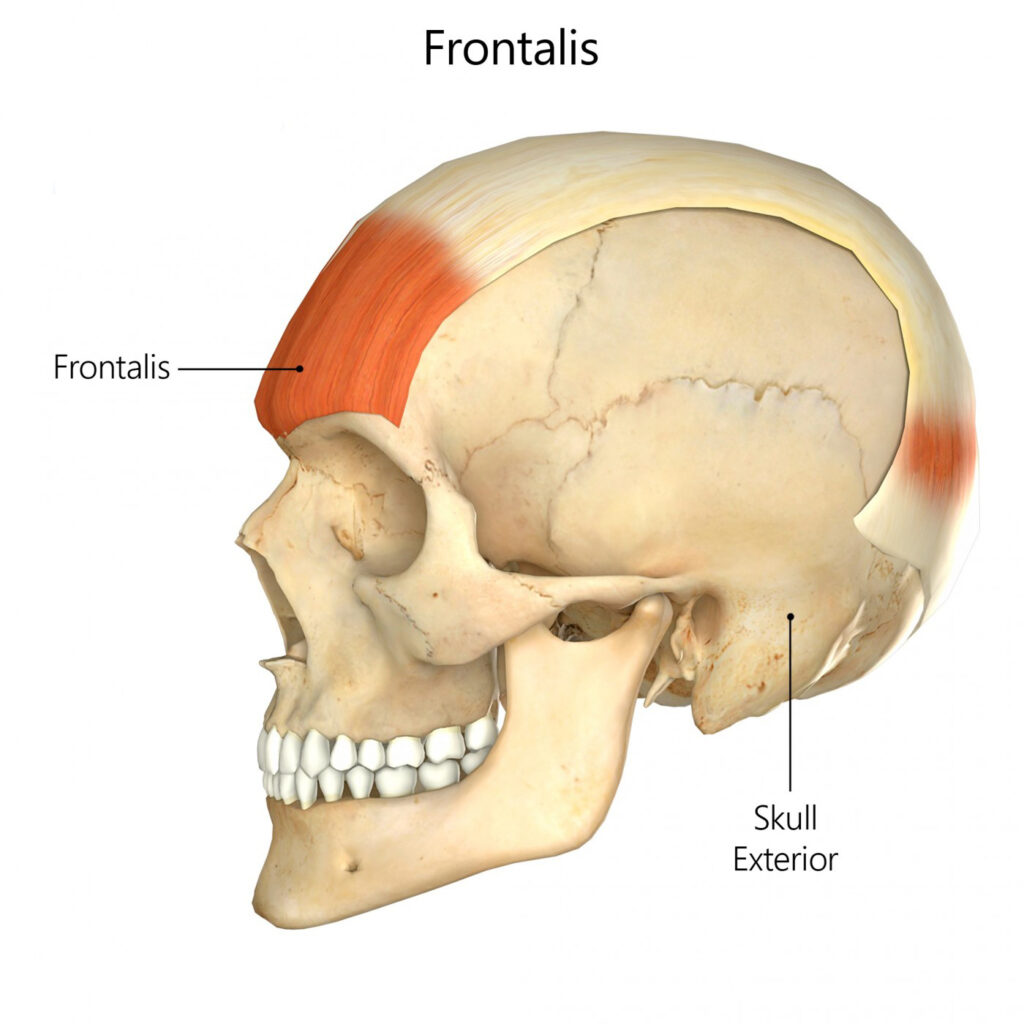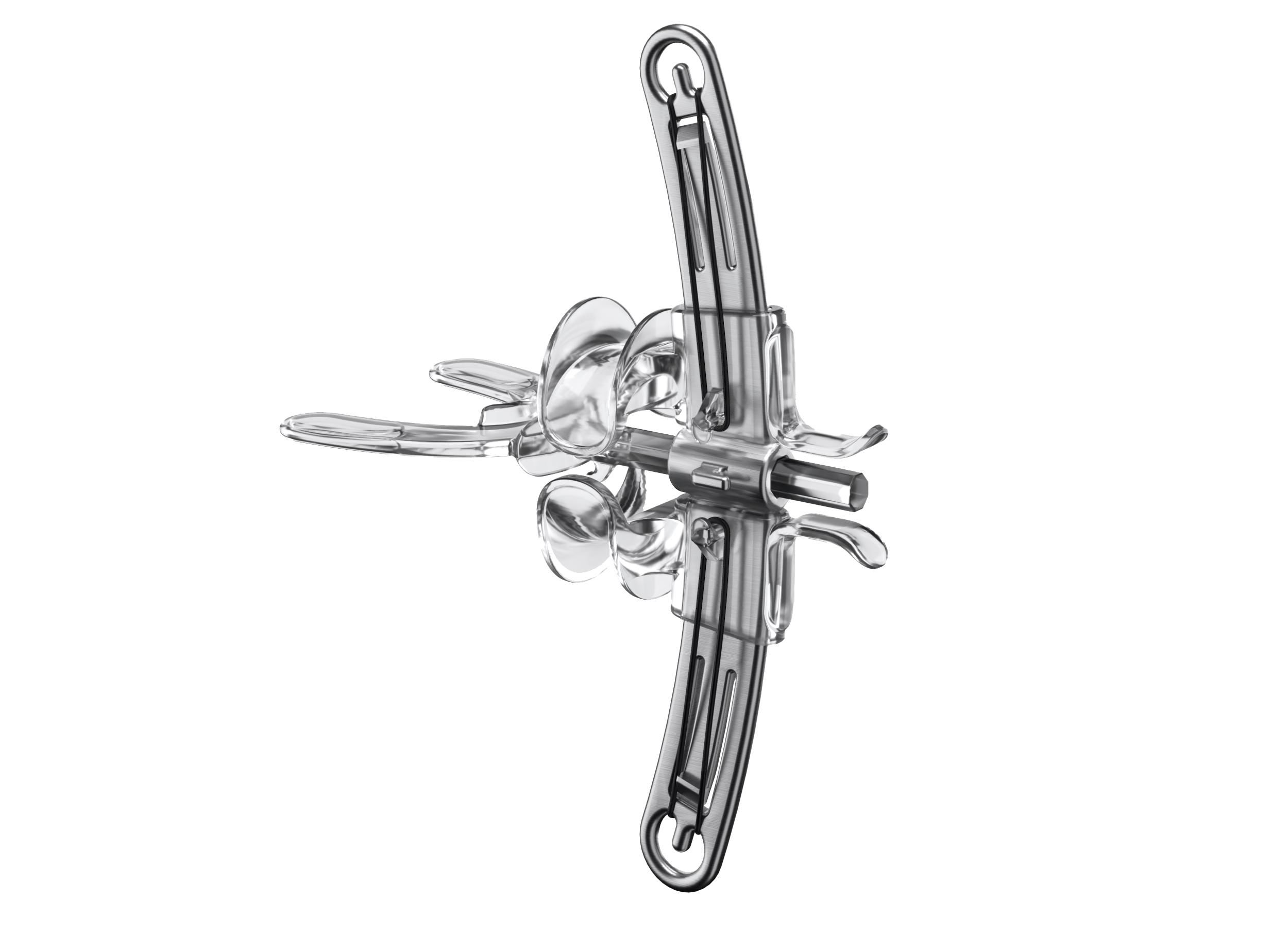ISO Metrik Face Education
Contact Us
Call Us
+1 (678) 632-3745
TESTMONIALS
ISO Metrik offers a game-changing, non-invasive solution to facial sagging — a safer, easier, and more affordable alternative to Botox and surgery. Its potential to support stroke patients with facial weakness makes it an exciting potential addition to modern stroke. rehabilitation.
Dr. Will Humphries
MAKE AN APPOINTMENT
Frontalis
Posted on 30th Jul 2020 / Published in: Face , Head
General information
Frontalis, also referred to as the epicranius, is a muscle of the forehead which adheres to the superficial fascia. It is often considered to be synonymous with the occipitofrontalis muscle.
Literal meaning
The muscle at the front of the skull.
Interesting information
This large, quadrilateral shaped muscle is responsible for lifting the eyebrows which makes it an essential anatomical structure for human emotional expression. Frontalis also manipulates the forehead and eyebrows when a person attempts to view an object that is too far away or when the lighting is too dim for clear visualization.
Frontalis can become strained from repetitive or prolonged use such as persistent frowning or focusing on a distant or unclear object for an extended period. Many people tense their frontalis muscle while engaging in everyday activities without realizing it. Frontalis strain manifests through pain across the forehead or tension headaches.
The best way to relieve strain on this muscle is to either rest it and apply a cool compress or gently massage the forehead. Massage stimulates blood flow to the forehead and can relieve frontalis muscle tension.
Origin
Galea aponeurotica
Insertion
Near the ridge just above the eyebrows
Function
Frontalis is responsible for raising the eyebrows and wrinkling or tensing the forehead skin as well as shifting the aponeurosis forward (anteriorly). It weakly assists in raising the eyelids.
Nerve supply
Facial nerve (cranial nerve VII)
Blood supply
Ophthalmic artery

Relevant research
Frontalis muscle flap-based reconstruction can provide favorable aesthetic and functional results for patients requiring eyelid rebuilding that is full thickness and involves more than 50% of the eyelid. Conventional methods involve unnecessarily bulky muscle flaps and result in forehead scars. This new method constitutes an important surgical reconstruction advancement.
Surgical suspension of the frontalis muscle flap has been shown to be effective in treating congenital blepharoptosis in young children. This procedure may prevent developmental abnormalities in children suffering from this condition.
Hou D, Li G, Fang L, Li B (2013). “Frontalis Muscle Flap Suspension for the Correction of Congenital Blepharoptosis in Early Age Children”. PLoS ONE 8(1): e53185. doi:10.1371/journal.pone.0053185
Frontalis exercises
To relieve tension in your frontalis muscle, sit in a comfortable chair and frown while lowering your eyebrows as much as possible. Hold this position for five seconds then immediately raise your eyebrows as high as possible while smiling. Hold this position for five seconds then repeat the entire exercise ten times.
An alternate method for relieving frontalis tension is to simply give yourself a gentle forehead massage. Begin with your fingers just above your eyebrows. Then make small circles with your index and middle fingers, slowly moving up to your scalp. When you reach your hairline, start back at the eyebrows again.
Frontalis: Lifting the Brow, Framing the Face
The frontalis muscle is the broad, flat muscle that spans the forehead. It’s responsible for lifting the eyebrows, wrinkling the forehead, and framing the eyes. It gives your face a look of attentiveness, concern, or joy—and is one of the most emotionally responsive muscles in the entire facial system.
As a primary elevator of the upper face, the frontalis works closely with the orbicularis oculi, procerus, and corrugator supercilii to control expression, brow position, and facial symmetry.

Anatomy & Function
- Origin: Galea aponeurotica (fibrous layer of the scalp)
- Insertion: Skin of the eyebrows and forehead
- Function: Elevates the eyebrows, wrinkles the forehead horizontally
- Nerve Supply: Temporal branch of the facial nerve
- Synergistic Muscles: Orbicularis oculi, procerus, corrugator supercilii, zygomaticus major/minor
The frontalis helps visually open the eyes, keep the upper face animated, and maintain upper-third facial balance.
The Problem: Compensation, Tension, and Aging
As the midface and lower face weaken with age or disuse, the frontalis often becomes overactive, attempting to “hold up” expressions that should be shared across the face. This leads to:
- Horizontal forehead lines from repeated raising of the brows
- A constantly surprised, tense, or strained appearance
- Eyebrow asymmetry or sagging in unsupported areas
- Downward pull from aging midface muscles, causing the upper face to work harder
This compensatory overuse creates visual aging—even when the rest of the face is at rest.
The ISO Metrik Device: Indirect Support for Frontalis Relaxation & Balance
While the ISO Metrik Device does not target the frontalis directly, it plays a crucial role in relieving strain on the forehead by activating the muscles that share the load of expression—especially the zygomaticus system, orbicularis oris, and levator group.
Here's how the device supports frontalis performance:
- Reactivates the midface, reducing the need for overcompensation from the forehead
- Restores tone and lift to the cheeks and upper lip, allowing the brow to relax naturally
- Encourages full-face symmetry and dynamic balance, smoothing out forehead tension lines over time
- Helps redirect expressive force to the center of the face, where natural emotion begins
This shift in muscular engagement gives the frontalis a break—allowing it to respond only when needed, rather than carrying the whole face.
Why the Frontalis Matters
The forehead is your emotional headline—and the frontalis is what writes it. When it’s balanced and supported by a strong midface and perioral system, the forehead stays smooth, expressive, and youthful—without becoming overworked.
The ISO Metrik Device supports this from below—helping your entire face function as a unified, expressive system, with the frontalis free to do its job in harmony with the rest.
Want smoother forehead lines, brighter eyes, and more balanced expressions?
Start by strengthening the face from the foundation up—with the ISO Metrik Device.
TESTMONIALS
Dimply dummy text of the deaprinting and typesetting industryorem Ipsum has been the industry’s standard dummy dearty.
DAVID SMITH
CEO,Radiustheme
Contact Us
Call Us
+1 (678) 632-3745
MAKE AN APPOINTMENT
Your journey to facial rejuvenation begins here. Join the ISO Metrik Device Community today.

